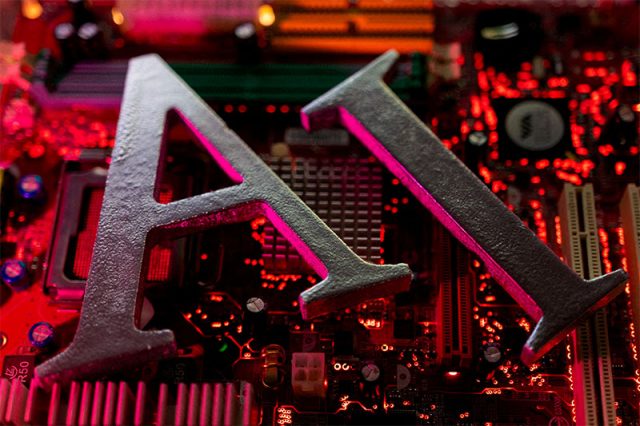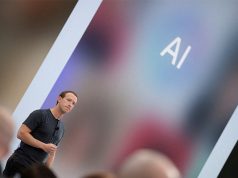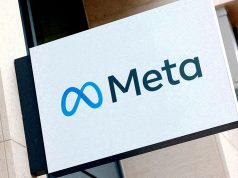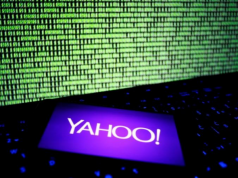
- Most entertainment executives see AI displacing workers
- Animators, visual effects demand credit for their work
- Independent filmmakers see opportunities
LOS ANGELES (Thomson Reuters Foundation) — “In the good old days,” mused DreamWorks co-founder and former Disney CEO Jeffrey Katzenberg late last year, “it took 500 artists five years to make a world-class animated movie. I don’t think it will take 10% of that three years out from now.”
With Hollywood already replacing staff with generative artificial intelligence (AI) tools, people working the industry want rules to govern the new technology and to make sure it does not use images they have created without compensating them.
The U.S. film, television and animation industry employs some 550,000 people and the sector’s extensive use of technology makes staff particularly vulnerable to changes wrought by AI.
“There’s a high level of exposure to AI for a lot of workers in the entertainment industry,” said Adam Fowler, an economist with CVL Economics, a consulting firm that has surveyed attitudes to AI in Hollywood.
Fowler published a study in January, commissioned by labor groups representing animators, cartoonists and other Hollywood artists, that found 75% of industry bosses had eliminated, reduced or consolidated jobs after introducing AI into their workplaces.
Unions representing animation and visual effects workers plan to demand rules for how studios deploy AI.
“We are being threatened by replacement with tools that are not qualified to replace us,” said Mark Patch, an organizer with the visual effects (VFX) union. “We want to put in some defenses in our contract.”
Fowler estimates that by 2026 more than 100,000 of the nation’s 550,000 film, TV, and animation jobs will be disrupted by the explosion of recently developed generative AI products, including tools that can create images from text prompts, automatically animate shapes, or generate digital 3D models.
OpenAI, the AI company behind ChatGPT, last month unveiled a tool called Sora that generates realistic videos based on simple text prompts, and is pitching the tool to Hollywood studios.
Labor action
Sam Tung, a storyboard artist and a member of an Animation Guild AI strategy committee, said his union would push for AI rules in its contract negotiations later this year.
“It will center around control – control over when and how AI products are deployed in our craft; who is requiring its use, who is able to make choices about how they are used,” he said.
Unions say the are not opposed to AI-powered tools that could make repetitive tasks more efficient.
But they are concerned that studios could replace their work with shoddy cheaper AI versions, using AI tools trained on images without crediting or paying the people who created them.
Unions representing both writers and actors won some protections from AI last year after a months-long strike, including rules that bar studios from forcing writers to use AI while drafting scripts.
Sarah Myers West, the managing director of the think-tank AI Now, said labor agreements were key battlegrounds where the future of AI in society was being hammered out.
“Increasingly it’s union contracts, and labor actions that are setting the terms under which AI tools are going to be deployed in the real world,” she said.
Faster, cheaper
The visual artists who power Hollywood films are no strangers to technology changes.
Many traditional animators who drew frame-by-frame saw their work disrupted by computer-generated tools after the 1995 film “Toy Story” introduced computer animation to the mainstream.
But workers say that generative AI presents novel challenges. Not only can studio executives now conjure their own images and videos from a simple text input, but many of the models that underpin those tools could have been trained by images created by the workers they are seeking to replace.
“Generative AI systems only operate because they have a large dataset of other people’s stuff,” said Tung. “Not enough people are asking: where is this data coming from?”
In previous contracts, the animation union won protections from technology changes, including rules requiring studios to retrain workers on new tools, and restrictions on the replacement of entire teams with new technologies.
Fowler’s study found the advent of generative AI tools was motivating studio executives to contemplate just such moves.
About a third of industry executives predicted that AI would displace 3D modelers by as early as 2026.
A quarter expected graphic designers to be affected as well, while about 15% flagged storyboard artists, illustrators, animators, surface and material artists as vulnerable to AI in the near term.
“If it’s faster and cheaper, executives may think it will allow them to lay off a bunch of artists. Then it becomes a real threat to our jobs – even if the art in the film becomes worse,” said Tung.
Democratizing tech?
However, for aspiring filmmakers – or those with small budgets – some new AI tools could open up new opportunities to visualize projects while pitching to studios or funders, said Nem Perez, an independent filmmaker in Los Angeles.
Perez created an app called StoryBlocker, which allows filmmakers to mock up their ideas using generative AI tools.
“The James Camerons of the world have whole teams that do this work for them; independent filmmakers don’t, so this can be democratized,” said Perez, referring to the director of the “Titanic” and “Avatar”.
Perez, and actor Sway Molina, recently brought together a team of AI artists and created a feature-length parody of the film “Terminator II” using only generative AI tools, to showcase the technology.
Since the film was a parody, its use of “Terminator” intellectual property was shielded from U.S. copyright claims, but the legality of using such tools for commercially released films is still unclear.
There are numerous legal challenges working their way through U.S. courts claiming that generative AI violates U.S. copyright law by training on other people’s intellectual property.
For its part, IATSE – the umbrella union that includes the animation and visual effects workers – has asked the U.S. Congress to strengthen copyright rules to ensure that AI products cannot be freely trained on the copyrighted work of its members.
The Animation Guild is currently surveying its members to gauge their concerns over AI and help devise a strategy.
Brandon Jarret, a guild member, said he thought workers’ concerns would extend beyond their own immediate fear of being replaced.
“Every time you prompt AI, how much water is used, how much power is consumed?” he asked. “These are things our members care about too.”
— Reporting by Avi Asher-Schapiro; Editing by Jon Hemming









